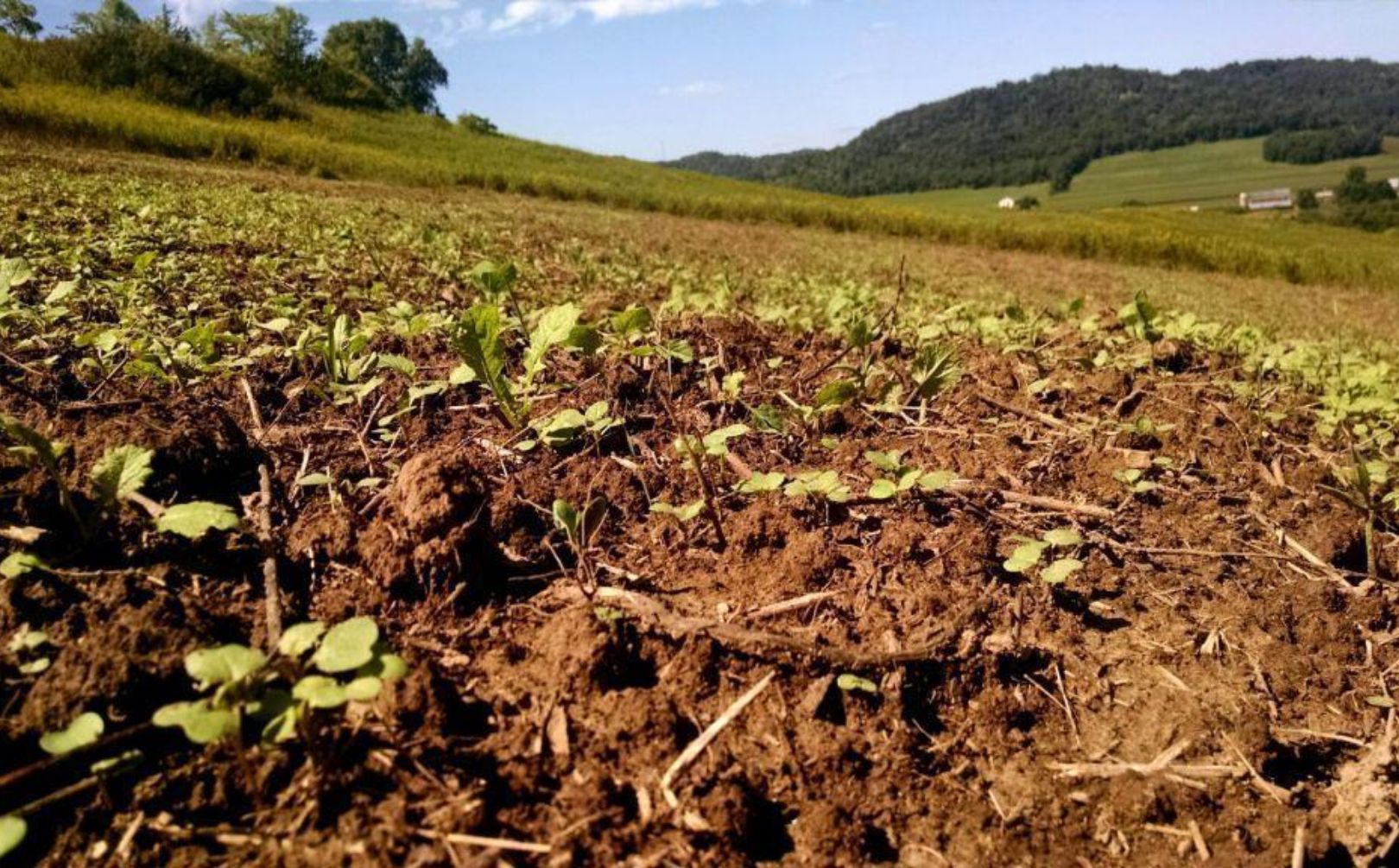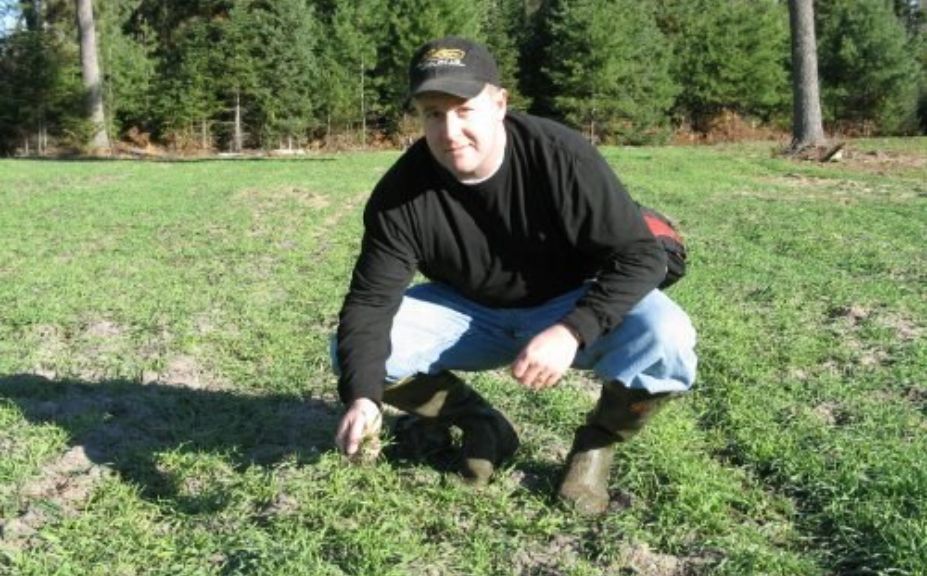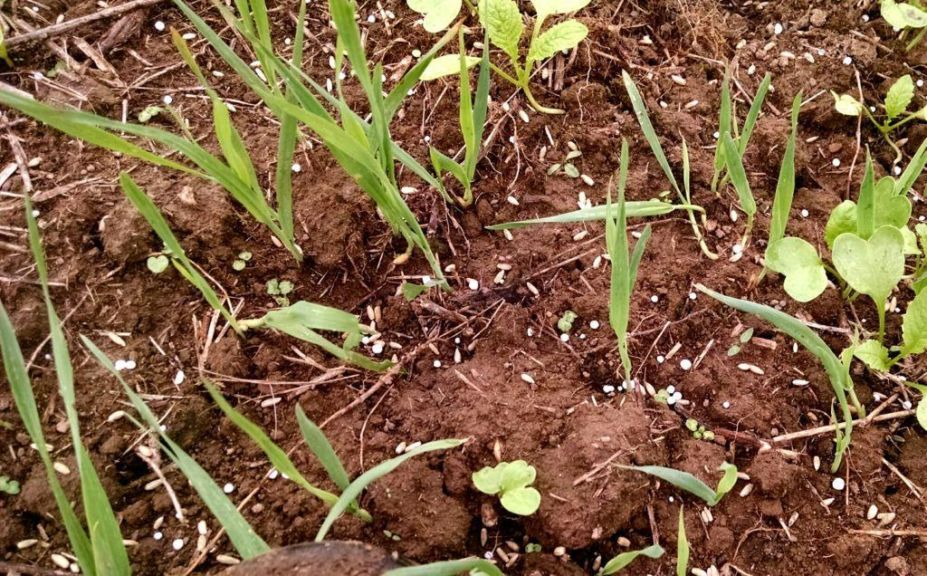
Just prior to the excitement of deer season openers across the country, another annual event rears its ugly head: Food Plot Failure Season. Have you ever experienced it? As the complexity of food plotting continues to climb, with hunters passionately seeking the latest planting methods and greatest seed blends, many ugly plotting truths are being realized each year:
1. Small fields of soybeans and brassicas can easily become completely consumed prior to the start of the season
2. High quality forages are very tough to grow in poor soils
3. The risk of Summer drought is very real
4. Lush growing clovers perform poorly on light soils
5. While various clovers, brassicas, wheat and rye will germinate adequately without being covered with soil; beans, peas, oats, and corn will not
*For a complete set of advanced whitetail hunting and habitat strategies for both private and public lands, make sure to check out my books titled,"Whitetail Success By Design" and "Food Plot Success By Design".
6. Weeds grow quite nicely in conditions too dry for food plot forages
7. The Ag Extension Office wasn't kidding when they recomended to apply 4 tons per acre of lime
8. "Can get their feet wet", means consistently damp soil, and not standing water, on top of the soil
9. Weeds really do grow faster than food plot forages!
No matter what the reason, food plot failures take place each year at a very high rate. Most failures require experience to consistently and accurately avoid, but it can be done! Unless your land is under several inches of water, you really can recover from nearly any food plot failure by using the following methods:
Lack of Forage
Did you food plot max out in growth somewhere between July and September? Don't feel bad, the annual plot depletion happens to 10s of thousands of food plotters each season. Both drought and grazing pressure can leave you with more exposed soils than lush forages, as the days march by on the way to the season opener. As long as you have effectively controlled weed growth, than you are still in luck! In most Northern States you can simply overseed the deminished planting with brassica and clovers by early August, and with Winter rye by early September.
Let's say that your dreams of a 1/2 acre of June-planted soybeans in December, never really got more than several inches off the ground. By late July, simply broadcast a 1/2 acre of brassica into the standing beans, and let some timely rains save your food plot failure. Then, if you still have more than 50% of the soil exposed sometime during early September, broadcast 100-150#s of Winter rye right over the top of your food plot.
When it comes time for the recovery of any food plot failure, the last resort may actually be your best! Winter rye has proven to be the most poor soil, low ph and cold weather tolerant forage available. Does your food plot contain more soil than green during late August and early September? No problem! Simply broadcast 100-150#s of Winter rye over the food plot failure and enjoy the hunting season. In a climate line drawn from Central MN through Central WI through Central MI, I like to add closer to 100#s of winter rye if needed, around September 1st. If you wait until mid September you can add 150#s per acre because your forage will lack the potential for both height and volume, and if you wait until closer to October 1st at least 200#s per acre of Winter rye is appropriate.

*Winter Rye is the most successful forage that you can plant, often growing in the back of my pick up, side walk cracks or front end loader bucket following planting season. For more on this incredible food plot forage, check out "The Power Of Winter Rye".
Weed Fields and Late Efforts
Weeds can sure be aggressive! Many times I have personally witnessed food plots failures that contained more weeds than anything else. In fact in some cases the weed growth represented at least 95% of the growth in the field. On the other hand if you are like me (in 2014 and 2015), circumstances may dictate that you have to create a last ditch, late Summer effort to plant within. If May, June, and July have come and gone; it's not too late! Late season plots can actually be better than early planted plots because they have a fairly high ability to offer fresh, green and succulent growth headed into deer season. They can also be established during periods of time when most weeds are dying, and moisture levels are consistently increasing. My personal "fool proof" method is this:
1. Spray (or not) a healthy dose of 2 quarts per acre of 41% concentrate glysophate and 1 pint of 2-4D, per acre.
2. Although ealier in August is better, through the end of September disc or till at least 7-10 days following your application of herbicide. If no herbicide is used, work the soil ASAP.
3. Combine:
*10#s forage radish
*30-40#s oats (choose your variety)
*50-100#s of Forage or Austrian Winter Peas (AWP are a little more cold hardy)
-make sure to drag or lightly disc into the soil prior to cultipacking
4. Within 2-3 weeks of germination, add 100-150#s per acre of Winter Rye by broadcasting over the plot.
*If soil exposure is light and/or the timing is early, broadcast 100-150#s per acre of Winter rye
*If the soil exposure is heavy and/or the timing late, lean more towards 150-200#s per acre of Winter Rye
5. If I am planting ealier in August, I may plant the above forage combination on one 1/2 of my plots, and on the other I will plant a mix containing up to 25#s of soybeans, 50#s of peas, and a full per acre blend of brassica seeds including a variety of rape and turnips. If I can see continuing the 2 sided food plot planting each year, I like to remove the radishes from the first blend, while adding to the 2nd. In that way you can avoid planting brassicas in the same locations 2 years in a row.
I love this combination of forages because it rarely if ever should lead to a total food plot failure. If the oats, peas and radishes feature poor or non-existent growth, broadcast a heavy dose of Winter rye and enjoy the season!

Conclusion
Unless your food plot is under water or completely frozen, there should rarely be a reason to take field of dirt into the bow season opener. And even after the season begins in most states, you still have time to recover from food plot failures. It almost sounds to easy to suggest, "just throw some rye on it and enjoy the season", but when it comes down to it, it really is that easy in most cases. Whether you experience total consumption, a complete lack of growth, a field of weeds or even a planting late that seems too late, beautiful fields of green can still be in your immediate future. There is rarely a reason to let the ugliness of Food Plot Failure Season get you down!